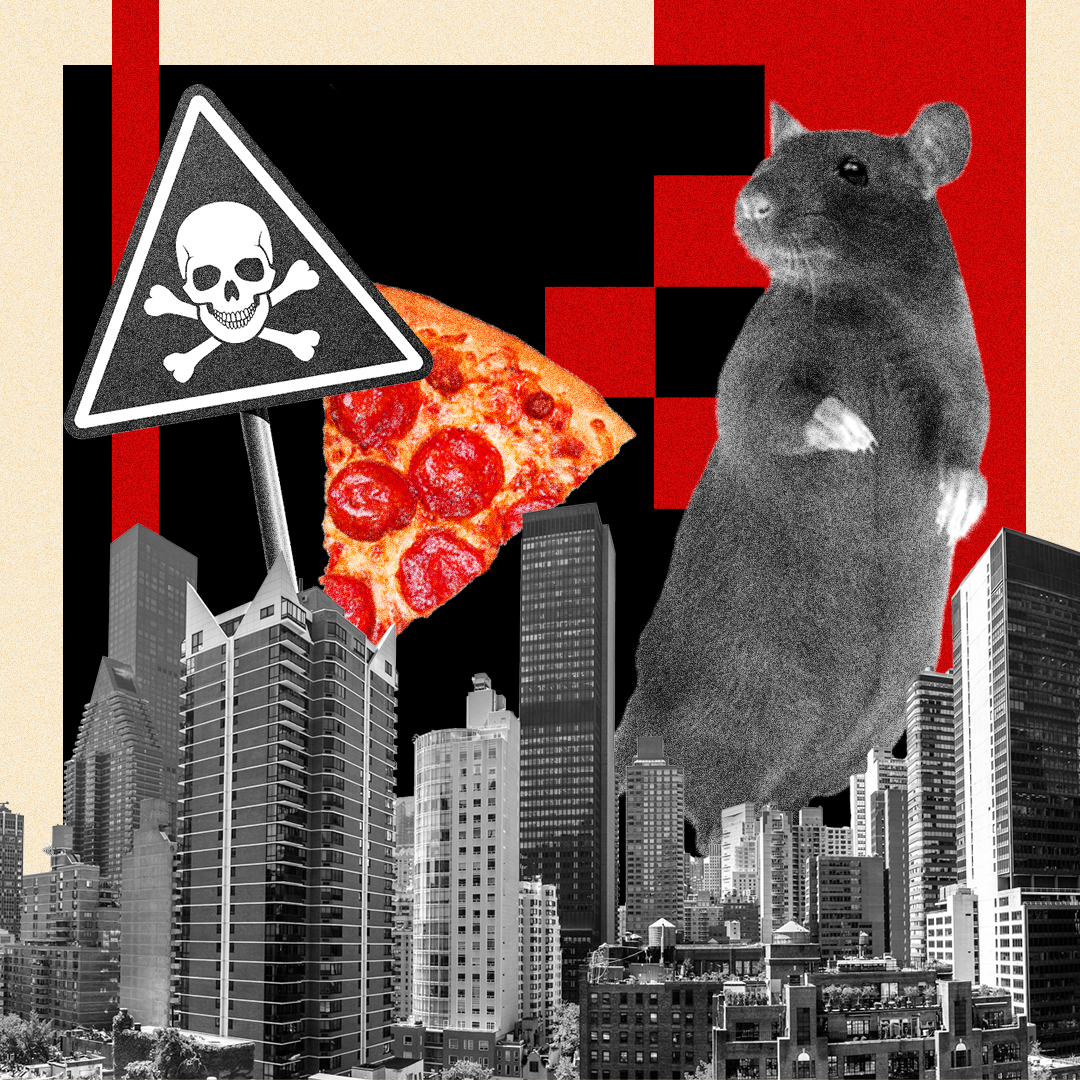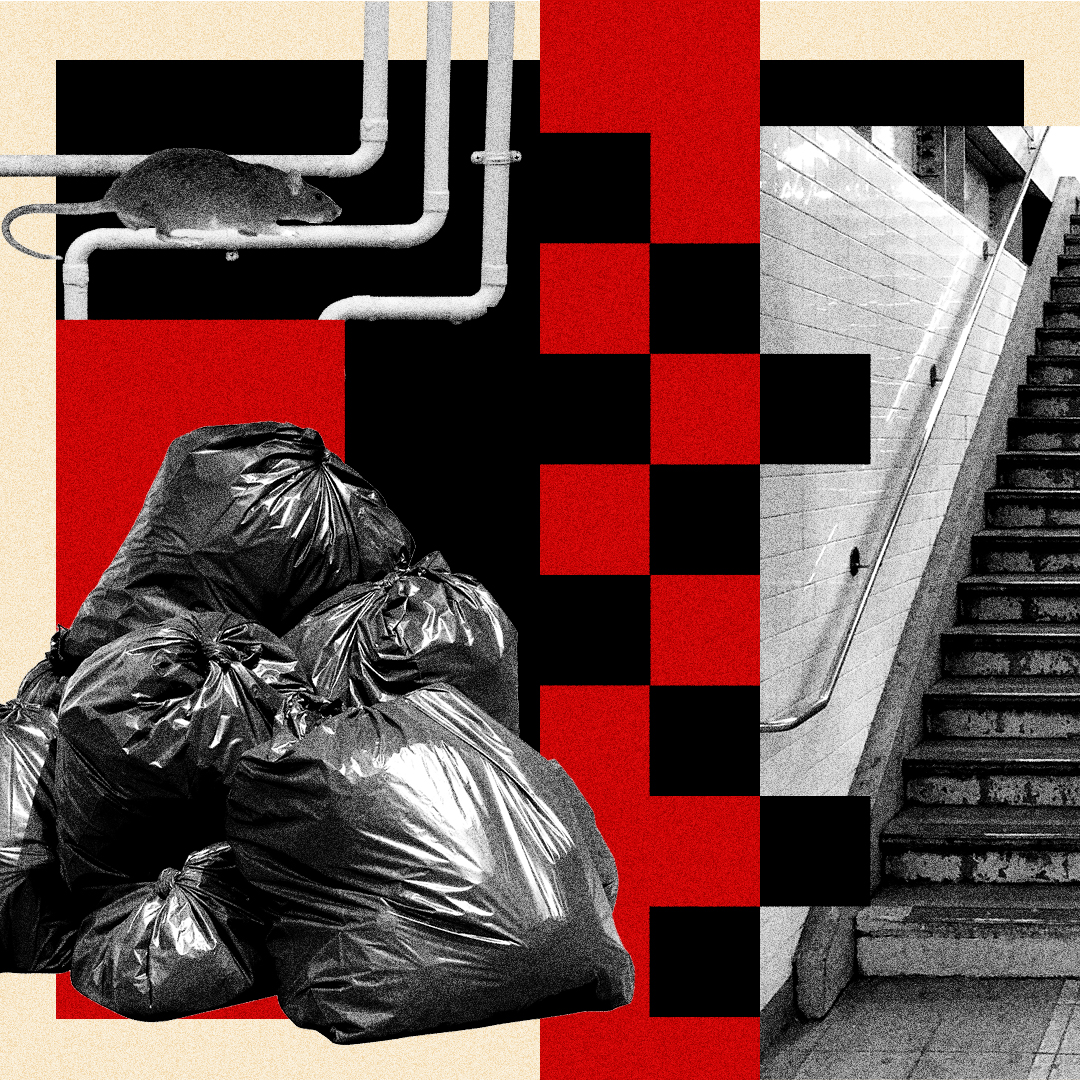For the past year, Kenny Bollwerk has been filming the rats that are blighting New York City and urging his 250,000 followers to report areas that he describes as having high “rat-tivity” to the authorities.
His TikTok videos have received millions of views and it wasn’t long before fans started asking to come out with him on his rat patrols. Bollwerk had created – albeit accidentally – a unique form of tourism that must have given NYC’s urban planners and sanitation officials serious cause for concern. Perhaps it was rat tourism that proved the last straw for Eric Adams, the city's mayor.
Or perhaps it was the reports of rats becoming ever-bigger – New York has a well-worn cycle of news stories about evolving breeds of rats the size of cats or dogs which appear periodically. Maybe it was their growing chutzpah – there is film (viewed 12m times) of one rat dragging a slice of pizza, longer than its own body, down a subway station.
Whatever the reason, Mayor Adams decided enough was enough. Earlier this year he advertised for applicants who were “bloodthirsty,” had “killer instincts” and wanted to see the “wholesale slaughter” of rats. This April, with much fanfare, he appointed New York’s first rat tsar, Kathleen Corradi.
Corradi, a former primary school teacher, is the city’s ‘director of rodent mitigation’, tasked with destroying the rat population which New Yorkers place alongside with crime and soaring rents as blights on the city. She has form, first campaigning against rat infestations as a 10-year-old, and later attempting to stamp them out in school buildings. “You’ll be seeing a lot more of me – and a lot less rats,” she said on taking up the position. “There’s a new sheriff in town.”
Just how big her rat problem is, no one knows. There have been glib estimates of the New York rat population at anything between “two and a billion” but, says rodentologist, and New York native, Bobby Corrigan, “There are likely millions but we will probably never know exactly. So what?”
There are more rodent species than any other mammal group and Corrigan has spent a lifetime studying them - rats in particular, since first encountering them early on his career, as an exterminator monitoring sewers in NYC in the 1970s.
“What fascinates me about rats is their mystery. They’re very secretive, very intelligent and look how successful they are. I really admire their species.”
In the field he has seen rats co-operating together and even using tools: rats can use small sticks as levers to get food and have been known to drop weights to trigger spring-mounted traps making it safe for them to grab the bait afterwards.

“You’ll be seeing a lot more of me – and a lot less rats” Kathleen Corradi, NYC’s director of rodent mitigation
He understands human antipathy towards them, though. They are, after all, harbingers of disease, most notorious for carrying the plague from central Asia (albeit this is now contested). And, more recently, they have been associated with some coronavirus variants. Having worked in academia for 16 years before becoming a full-time scientific consultant, he now has his own “rodent academy” which trains people how to deal with rats in their own towns and cities.
“It’s all about the trash,” Corrigan sighs. “No food equals no rats. If you live in a neighbourhood where there’s no food and no way of getting any, you’re going to either move away or die. Same with rats.”
Although rats can hunt – Corrigan has seen them stalk prey and even witnessed one dragging a pigeon down a drain – generally they are, in a memorable phrase used by rodentologists, “kleptoparasites”. Which means they are ruthlessly looking for resources to steal from other species, in particular, humans. And we make life very easy for them to thrive with rubbish piled everywhere. “If you have 10 houses on your block and just one or two don’t care about cleanliness, then you have a problem,” says Corrigan. “It’s very difficult on a grand scale to get human beings to practise smart garbage disposal and deny the rats food.”
Of course, it’s not just New York with more than its fair share of residing rodents. Chicago seems to have even more of a problem and rat monitoring boxes have become a familiar, if unwelcome, feature in many cities across the world.
While London’s sewers are regarded as a very desirable home for the city’s rats, Corrigan disputes whether any sewer system seethes with a carpet of rats, as the popular image has it. “In a sewer I’ll see a half dozen rats, then a few hundred feet along, maybe some more.” Even Singapore, which prides itself on cleanliness and where dropping litter can land you a £1,200 fine and community service order, has areas with rats.
In fact, the only inhabited place on Earth that has conquered the rat is the rural province of Alberta, in Canada. It has had a rigorous, decades-long approach to rat eradication involving educating residents about prevention, strict rubbish protocols, fines for anyone who brings a rat into the area without a permit and monitoring its borders with other provinces. Alberta is confident it has no breeding rat population (the occasional single rat hitches a ride on a lorry) although this is no doubt helped by its relative isolation and low human population density. Although the local government runs a rat hotline, the vast majority of calls are misidentifications largely caused by most Albertans never having seen a rat at close quarters.
Elsewhere, we appear to be fighting a losing battle – even animal welfare practices are giving rats a free pass.
“In the UK, I do a lot of work around pig farms,” says Steven Belmain, professor of ecology at the University of Greenwich. “Pigs here have a very happy life [typically British pigs have access to outside spaces rather than being kept inside in stalls] but we’ve made it very easy for rats to live alongside them. It creates huge, huge problems.”

“It’s all about the trash. No food equals no rats” Bobby Corrigan, RMC Pest Management Consulting
There has also been a reevaluation of how rats should be dealt with and they are benefiting from a more humanitarian approach to their presence. Both Corrigan and Belmain are uncomfortable with the idea of relying on poison to reduce rats, favouring deterrence over destruction. The Netherlands has this year severely restricted anti-coagulants primarily used to kill rats, as did the Canadian province of British Columbia in 2022 and a ban is on its way in California. Paris too is debating a kinder way of dealing with the rats that have flourished in the city following a series of rubbish strikes, its mayor, Anne Hidalgo advocating for cohabitation.
And, she has a point. Rats really can be our friends, if we try to get along. Belmain is involved with a hero rat project in Tanzania, in which a different species of rat that is not adapted to cities (the Gambian pouched rat) and has an incredible sense of smell is put to good use. “They seek out landmines and they’re also very good at recognising diseases such as TB,” he says. “One rodent can [identify a positive TB sample] in a few seconds. They’re far more effective than humans.”
The popular image of the rat as a fanged scavenger, waiting for a momentary lapse in our defences to take charge of our neighbourhoods and even our homes, is a long way behind the evidence that rats can be a force for good. In parts of Africa, pouched rats are also being trained at ports and borders to sniff out contraband, in particular animal parts such as elephant tusks, rhino horns and pangolins. Other hero rat projects include using rats’ agility and small size in tandem with their sense of smell to hunt for life in the rubble of collapsed buildings.
Nevertheless, Corradi is taking no prisoners with city rats. She has introduced a series of measures to combat the New York rat population including “rat mitigation zones” – one covers the whole of Harlem – which will have intensive programmes including strict rubbish storage by-laws, a team of 19 deputies inspecting parks and pavements to seal up potential or existing rat holes, and when necessary as a last resort, employing poisons and burrow treatments with carbon dioxide.
Will she succeed? In June, Mayor Adams reported a 20% reduction in calls to the city’s hotline compared to the previous year. It’s a promising start but although he may be the first mayor to employ a rat tsar, he is not the first to take on the rats: Rudi Giuliani created his own rodent academy to combat the rats during the 1990s and threw $8m at the problem without lasting success.
Later, Bill de Blasio splurged a further $30m on eradicating rats. It would be a brave mayor who staked their reputation on ridding the city of rats, even with the help a “bloodthirsty” rat catcher such as Corradi.
MODUS
Modus staff 25 April 2024